When trying to understand the Viking Age society of the far north, especially the coastal region of Lofoten and Vesterålen in Norway, we need to consider an interesting, multicultural dynamic. We are talking about the interaction between two groups, which we later came to call Norse and Sámi. This cultural diversity is an important characteristic of the Iron Age of Northern Norway.
Ohthere received gafole from the Sámi
The chieftain Ohthere (Norwegian: Ottar) travelled from his home farm in Northern Norway to England around the year 890. At the court of King Alfred the Great he presented him an oral account of this journeys of trade and exploration.
In this account, Ohthere mentions that he received gafole from the Sámi, in the form of furs; skins from land and sea mammals (otter, marten, bear and reindeer). He also stresses that these goods, next to export and shipping, constituted his most important source of income.
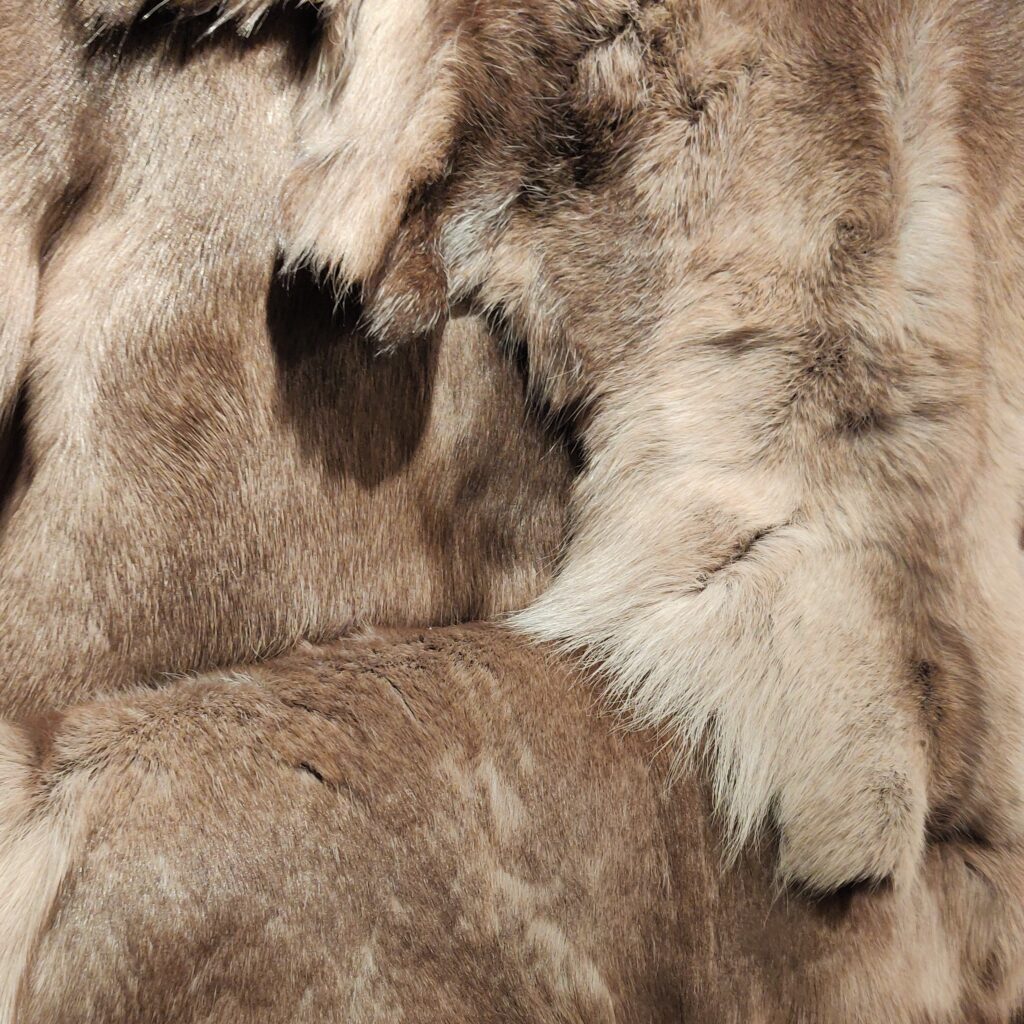
It has been debated how the word gafole should be interpreted. It can be linked to the Proto-Germanic word *gabulą which means ‘tribute’. This has led some historians to the conclusion that this must have meant a type of tax or levy.
When taking a closer look at the Norse world gǫfga, its meaning is much broader, and more positively charged: ‘to give, to sacrifice, to honour’. When combining these verbs into one word, we might also feel a resemblance to the bonds between the chieftain and the farmers in Norse society. These bonds might appear like economic transactions on the surface: the chieftain provided political protection in exchange for resources from the farmers. However, this «arrangement» was much more than that, and had a strong symbolic dimension to it. It was a personal tie, with strong, mutual loyalty and dependence at its core and embedded with many rules of conduct and respect. Gafole from the Sámi which Othere is talking about, can be understood in the same manner.
Close and frequent contact
The archaeological and written source material from the coastal region of Northern Norway, underline the frequent and close contact between the Norse and Sámi groups. The Sámi were an integrated part of the economic system, and a vital part of the resource base of the chieftains (the redistributive system). The contact took the shape of trade relations, alliances, and friendship ties. Marriage and kinship ties between the Norse and Sámi elite further secured their bonds.
The resources provided by the Sámi were especially productions from hunting and trapping of great land and sea mammals, such as precious furs, walrus teeth, down and feathers, marine oil, and more. These goods were considered very valuable and were highly sought-after trade commodities and prestige goods. To fulfil this demand which existed both locally and further south in Scandinavia, on the Continent and the British Isles, people developed specific economic strategies.
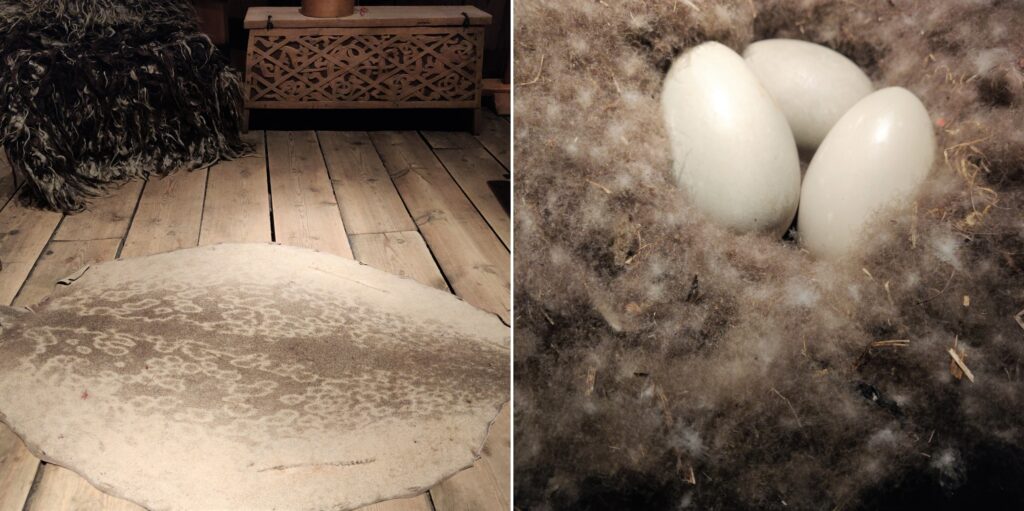
A safe sea route was a necessity to ensure trade goods ending up at their destination, which was achieved by building alliances along the coast. Here we can see a direct connection to the political expansion of the region under the control of the Earls of Lade. Also, the ties with the Sámi were strengthened, who in turn responded by increasing and specializing their production.
Increased cultural contacts, on the one hand, can reinforce the feeling of being different, and the need to express these differences and express their cultural affiliation. For example, the use of signs, ornamentation, and dress style, which had a specific, symbolic and cultural meaning. On the other hand cultural contacts can also lead to mutual influence. Usually, these two dynamics go hand in hand.
An example of a mutual influence can be found in language. In the Viking Age, the Sámi population spoke a language which belongs to the Finno-Ugric language group, the Norse population to the Germanic language group. We notice the appearance of so-called loanwords, words borrowed from the other language and incorporated in their own. An example is the modern day, Norwegian word for ‘fox’ (‘rev’). This word is of Finni-Ugric origin, and it is believed that it was borrowed early in the Iron Age. Moreover, because of the importance of the bonds between the Sámi and Norse elite, it has also been suggested the need for being bilingual. We can imagine, for example, this resulting in chieftains engaging a language teacher for both himself and his family.
Cultural heritage in the landscape, some examples from Andøya
On the island groups of Lofoten and Vesterålen, the Norse and Sámi had their settlements and activity areas at close range and over a long period of time. The cultural heritage in the landscape stresses the short distance between them. On the island of Andøya, for example, these sites are found only 1,5 km apart.
When studying these sites, a general pattern seems to emerge: The Norse settlements are often found spread along the outer coast, while the Sámi settlements are found further inland, in mountain areas, valleys and marshlands.
The cultural heritage sites show a great diversity of settlement and activity areas, connected to specific activities such as the hunt, or sites with a religious dimension, like the offering sites are a good example of. On the island of Andøya, the Bukkekjerka site is considered a Sámi offering site and is today marked as a tourist attraction along the Norwegian Scenic Routes.
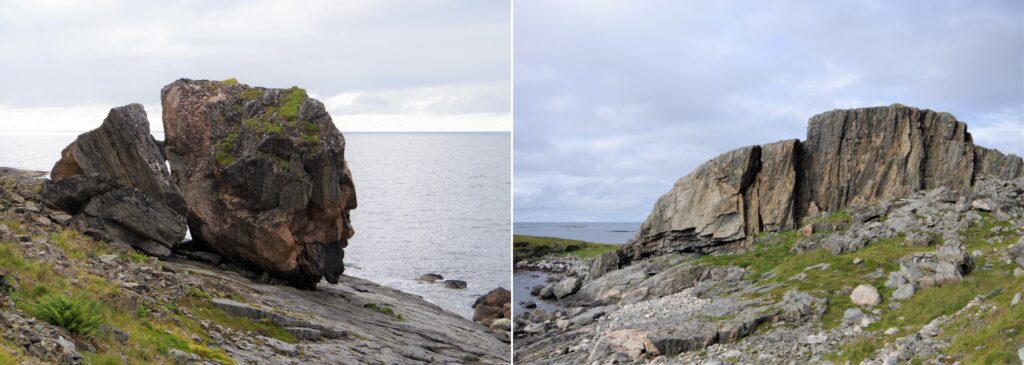
Back in the Iron Age, the Sámi brought offerings to spiritual powers, ancestors, and gods at specific times of the year and specific occasions. Traces of bones suggest that these offerings were mainly products from the hunt and fisheries. The offering sites themselves could be natural formations, like protruding cliffs or stone blocks of a special shape. Typically, the location of the offering sites is connected to important hunting and fishing groups, and migratory routes of the reindeer.
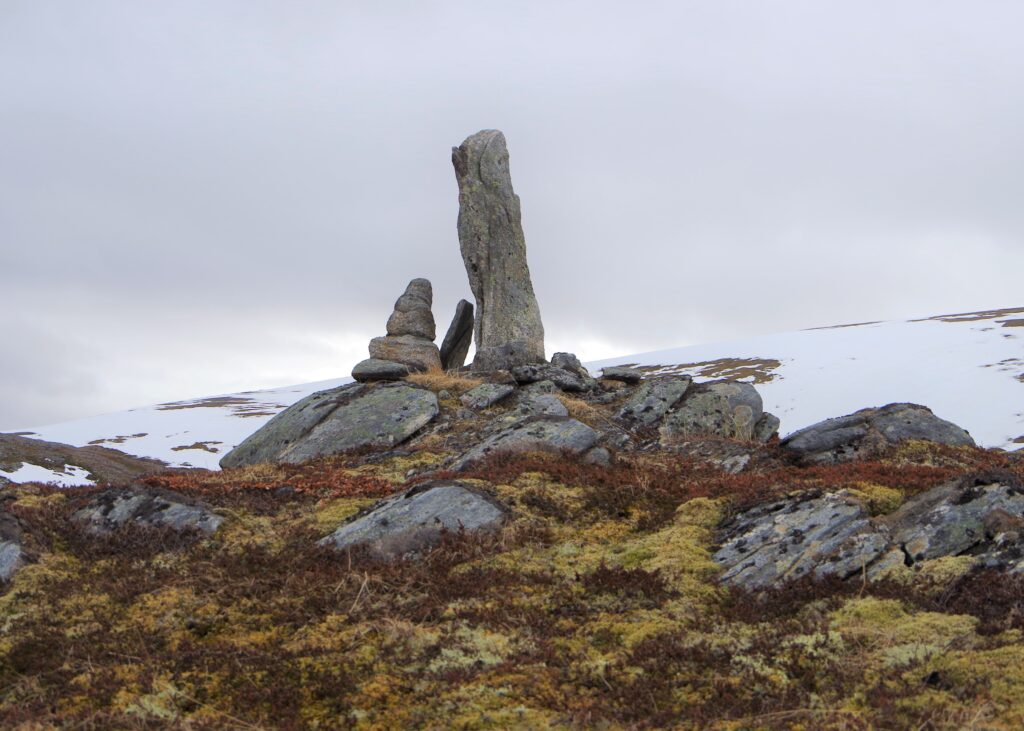
An interesting example is the sieidi-stone in the Stave valley. The largest stone is 1.4 m high and 50 cm wide, and around 10-12 cm thick. At its side, a smaller stone, approx. 60 cm high and 35 cm wide, getting smaller towards the top. This stone has been interpreted as a human-like attribute. It stands located centrally on a lower hill, midst of a mountain landscape with pitfalls and other human-made traps to facilitate the wild reindeer hunt.
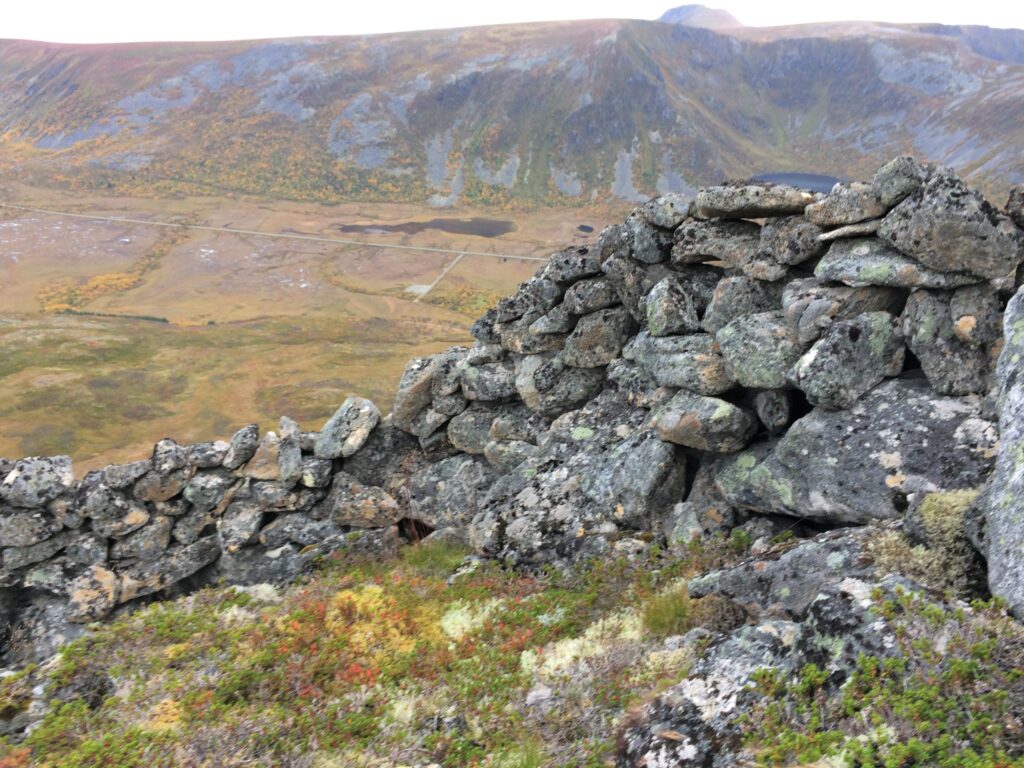
Examples of these human-made traps are so-called leading fences, which were made to guide the herd towards traps or enclosures, or to ‘push’ them off precipices or into lakes and rivers. Here, we see the leading fence near Sverigetinden. This could have been utilised for mass trapping and we can imagine how the herd was chases up the mountain slope and rushed towards the top. There the animals were forced down the mountain canyon where they died because of the fall or killed by hunters who were waiting by the lake. Today, reindeer bones can still be found here.
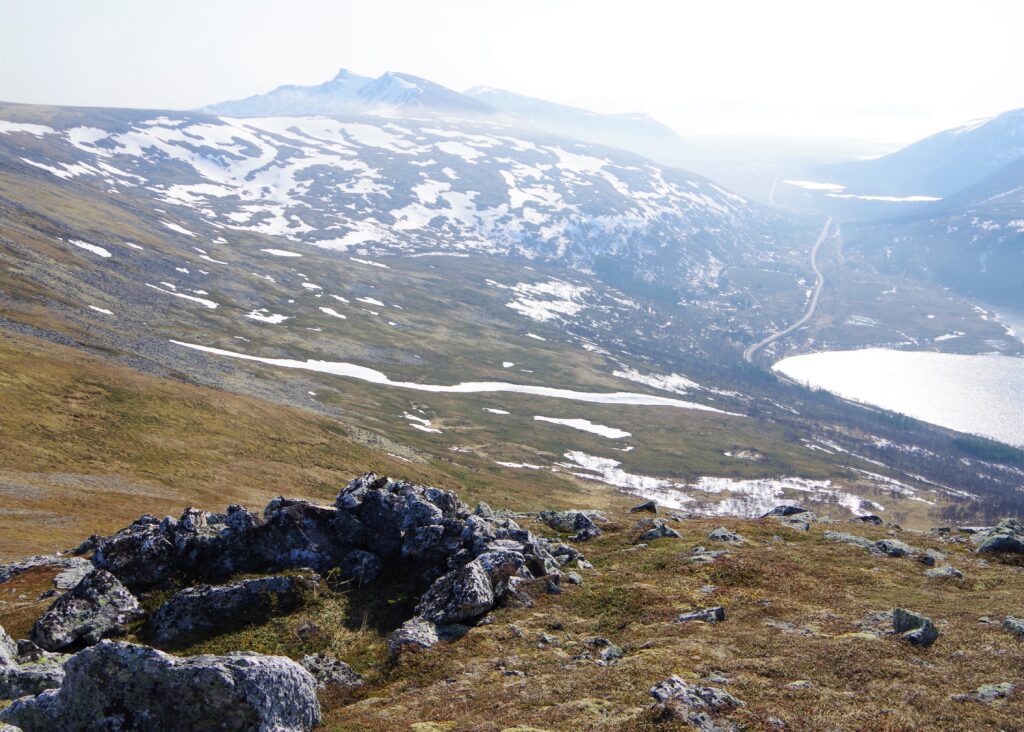
Also shooting shelters, also called stone-built hides, can be found in the area surrounding the Sieidi in the Stave valley. These formations have a crescent shape and the walls can be up to 1 m tall. They are often found at strategic places in the landscape: suitable points for attack with a great view of the area. Hunters could hide behind the walls and wait for the prey to come close enough to kill them. They could also suddenly appear from behind the walls, startling the animals and making them panic and flee towards traps.
An example of such traps are the so-called pitfall traps. The use of the type of traps has a great geographically distribution and goes back to the Stone Age where they were used for catching animals such as wolves, elk and reindeer. On the island of Andøya, these sites are interpreted in the context of the wild reindeer hunt. The pitfall traps are found in the mountain areas, which formerly was a migratory route. Pits could be covered with branches and leaves to camouflage them in the landscape. Some traps were designed to capture live animals and keep them retained inside until the hunter could get to them – other traps were made with the aim to harm the animals to make them an easier pray. For panicked reindeer at full speed, the camouflaged traps would be difficult to detect.
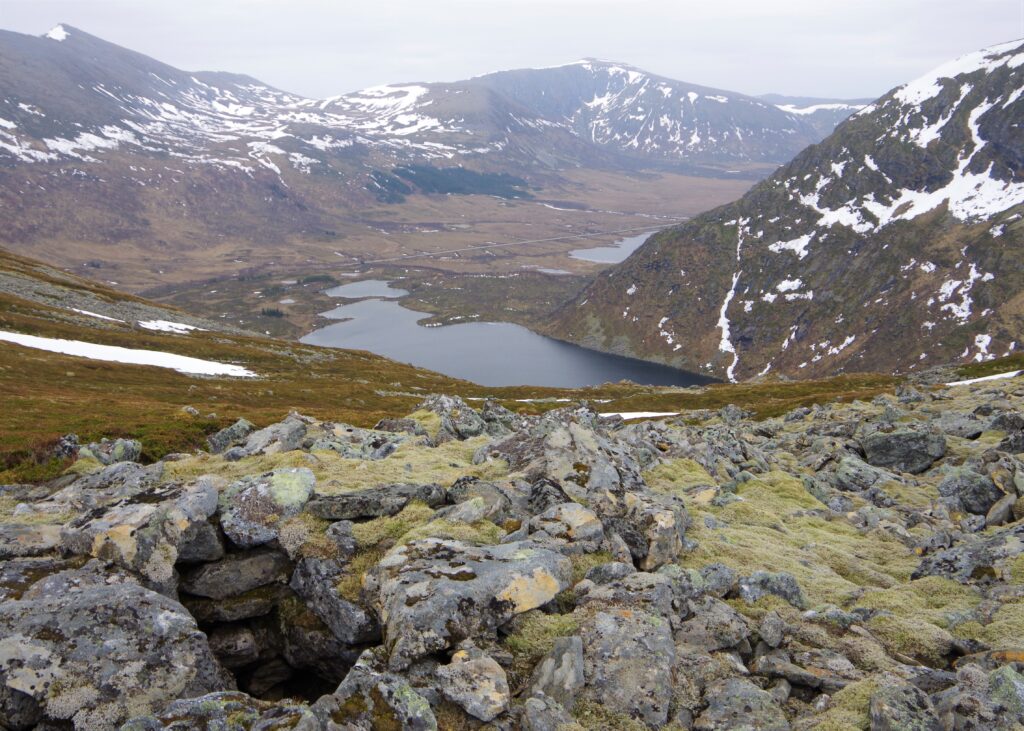
Concluding remarks
When we look at the archaeological material from Northern Norway, it is evident that the region was an integral part of a larger contact network and socio-cultural community in the Iron Age. Social ties connected the dispersed population in a large, complex and dynamic network.
The riches from the north were of crucial importance for the development and sustenance of the power base of the chieftaincies. These products from hunting and trapping were likely part of the chieftains’ redistributive system, and by developing specific economic strategies, they could successfully fulfil the great demand for Sámi products further south.
Especially in the Late Iron Age, resource utilisation was maximised, with intensification of fisheries and increased utilisation of hinterland resources. Maintaining and strengthening ties of friendship with Sámi groups was essential, and the Sámi appear to have increased and specialised their production.
With the development of the network of alliances along the coast, and by creating a safe sea route, conditions were met for safe long-distance travels and (more) direct trade routes. This development went hand in hand with increased social stratification, centralisation of power and expansion of the region under the control of the Earls of Lade.
Helena is the author of the book An iron age farm who explores the lives of the iron age people at the island Andøya on the northern coast of Norway.
You can read Scandinavian Archaeology’s interview with her here:
Interested in reading more? Buy Helena’s book here:
https://www.vikinghelena.com/book
Photos © Helena Hals 2021
Text © Helena Hals 2021. Copyright 2021 Scandinavian Archaeology
About the author
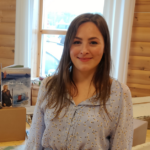
Helena Hals
Title and specalization: Historian, specialized in Early Scandinavian History, with a current research focus on Northern Norway.
Education: Propaedeutic Examination in Scandinavian Languages and Cultures from the University of Groningen.
A Bachelor’s Degree program in History from the University of Tromsø. In my Bachelor’s thesis, I analyzed the Icelandic medieval written sources by applying theories from Cultural memory studies.
A Master’s Degree Programme in History from the University of Tromsø. In my Master’s thesis, I analyzed the Courtyard site of Åse in light of the interpretation as a thing-site.During my studies I’ve taken many additional courses in archaeology and religion, comprising about two extra years of study.
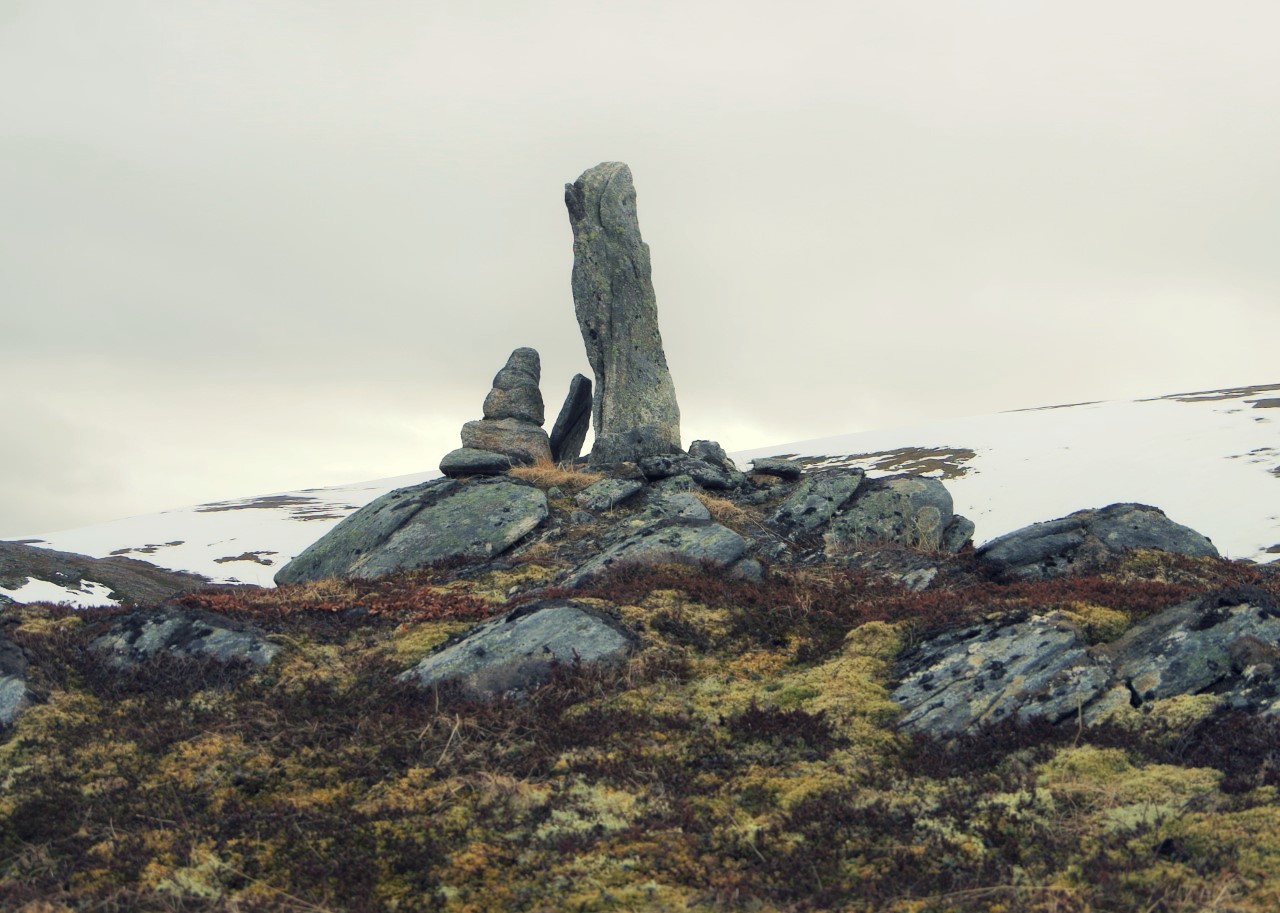

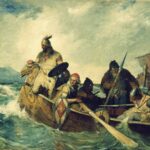
Hei. Jeg har skrevet tre historiske romaner (utgitt selv) der vikingtid er bakgrunnshisorie. I min neste (mulig tittel Håløygjarlen) kommer jeg til å bruke handel mellom høvdigene nord i Hålogaland. Handel med samene var viktig. Hva annet enn skinn ble sendt sørover? Reinsdyrshorn? Annet? I forbindelse med researchen har jeg forsøkt å finne ut mest mulig om Håløygjarlene. Etter det jeg forstå er det ikke avklart nøyaktig hvor de bodde – har bl.a lest at Andøya kan være en mulighet. I en roman kan jeg selvfølgelig skrive hva som helst, men ønsker å ikke skrive noe som beviselig blir feil. Veldig interessant artikkel. Mvh Jan Ragnar Nymoen – oppvokst i Gratangen – nå bosatt i Kongsberg. Vil sette stor pris på om du har mer å dele.
Hej Jan Ragnar!
Vad kul att du skriver romaner och släpper dessa själv. Spännande! Historiska romaner är lite av min favorit, såklart. Mitt tips till dig är att eventuellt höra av dig till Helena med frågor gällande Andoya, samt givetvis köpa hennes bok där det finns massvis med nyttig information om livet i Nordnorge under järnålder. Hennes kontaktinformation och hemsida finns i författarrutan i inlägget. Tack för att du tog dig tiden och läste samt kommenterade. Har du eventuellt någon hemsida där man kan se närmre på dina böcker?
Med vänlig hälsning,
Elfrida, Associate editor
Hi,
This is truly fascinating to hear of the bond between the Sami and Vikings. I would love to learn more.
Hello Åsa!
It is, isn’t it? The relationship with the Sami and the Vikings are truly fascinating. We hope to see more research on this in the future, both within the archaeological as well as historical field of science. Hopefully we can update you guys later this year with something new! 🙂
Best regards,
Elfrida, Associate editor
Great article and interesting read. Very informative.
Hello Wallace!
We totally agree, Helena have an excellent way of researching and portraying the past! 🙂
Best regards,
Elfrida, Associate editor
This is really fascinating. I’m wondering about shared spiritual practices between the two cultures, in particular the concept of the Völva and her relationship to Sami shamanic traditions. Do you have any recommended readings that might address this?
Hi Kari!
Let me keep an eye out for this kind of reading, and if I do find something I will let you know. This is indeed a very interesting point of view! Thank you for adding to this. 🙂
Best regards,
Elfrida, Associate Editor.
This is super interesting–would you have any recommended reading for Sami influences on Viking cosmology/worldview? Christian influences are always brought up because of the 13th century authorship of written sources, but looking at Nordic Bronze Age rock art, it seems likely to me that Sami and ancient Norse people have been in contact for a very long time. I’m guessing this subject has been studied in the past decades, but I am limited to reading from English or French sources, and have not found much on the subject. Many thanks for your article!
Hi Sébastien!
Thank you for commenting! We at Scandinavian Archaeology hope to publish more on this subject in the future, so keep an eye at our social medias and website! I could also keep an eye out for readings in English on this subject, and if I find something I will surely let you know. I consider this subject especially important with all the years of systematical racism and oppression against the Scandinavian Sami people in modern days society in mind. I would recommend you to buy Helenas book, which are to be found at her website (linked in the article). Have a great day!
Elfrida, Associate Editor
I really like your writing style, excellent info , appreciate it for putting up : D.